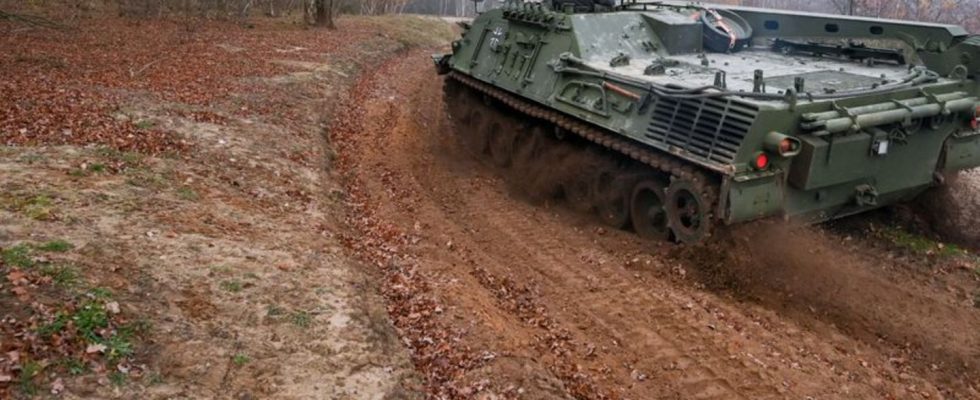natural reserve
Tanks in use for rare prehistoric crabs
A civilian tank is compacting routes in Sielmann’s Döberitzer Heide natural landscape so that puddles for prehistoric crabs can form there. photo
© Jens Kalaene/dpa-Zentralbild/dpa
Prehistoric crabs are millions of years old and can still be found in Germany, for example in the Döberitzer Heide. An unusual device was used there to protect the rare animals.
They are known as gimmicks from the “Yps” children’s magazines of the 70s and from experiment kits: millions of years old Prehistoric crabs. But the animals from the time of the dinosaurs are only rarely found in nature.
They occur in the Döberitzer Heide in the Havelland southwest of Berlin – in ponds and puddles on the former military training area. A civilian tank was deployed on Thursday to protect two critically endangered species of prehistoric crayfish.
The heavy vehicle rolled several times in a row on the former military site along previous routes on which biotopes for the animals could develop. The ground is compacted again by the tank trips so that water can collect in hollows. These puddles are essential for the survival of the prehistoric crayfish, as the Heinz Sielmann Foundation, the owner of the former military training area, described.
Good opportunities for walkers too
According to the foundation, the tank fairways are home to the two prehistoric crustaceans Triops cancriformis and Branchipus schaefferi. They were discovered there at the end of the 80s, said the expert at the Heinz Sielmann Foundation, Jörg Fürstenow. One Triops cancriformis can reach a size of more than ten centimeters, the other species is around 4 to 5 centimeters tall. Along the routes along hiking trails, walkers in the Döberitzer Heide also have a good chance of seeing such prehistoric crabs in puddles in summer, said Fürstenow.
The two types of prehistoric crayfish, which are typical of military training areas, occur sporadically in Germany, including in Saxony-Anhalt and Saxony, said biologist Alexander Gutsche, who also deals with the protection of prehistoric crayfish in the Döberitzer Heide. But stocks declined.
The former military training area in Havelland has a long military history. After the fall of the Wall, the large area became a nature reserve. “Fires, explosions and tracked vehicles left behind large open landscapes that are ecologically very valuable,” said the Heinz Sielmann Foundation, which acquired the area in 2004. In addition to the prehistoric crayfish, many protected animal species live there, including sea eagles, fire-bellied toads, wild bees and hoopoes. Bison, Przewalski’s horses and red deer have also been reintroduced there.

